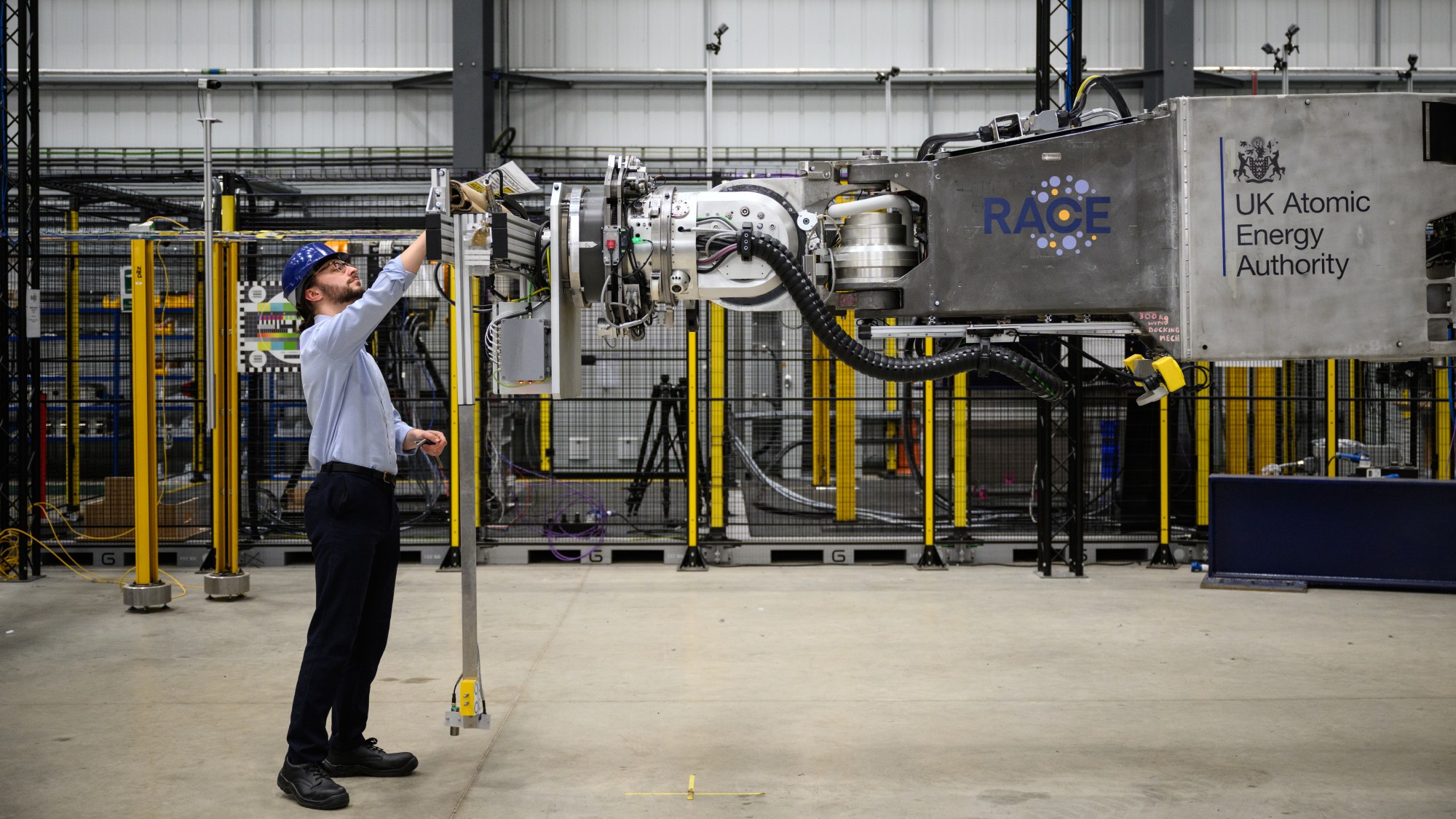Unveiling Dyson's new invention
The Dyson Air Multiplier is a "bladeless" fan—but is that something you really need?
"The tease is over," said Britain's Mirror. The "mystery gadget" bloggers have been buzzing about the last few days is the Dyson Air Multiplier, the world’s first bladeless, desktop fan. The latest contraption from the vacuum-cleaner maker looks like something from 2001: A Space Odyssey, but it's really fairly simple. The Dyson fan isn't truly bladeless—it has a fan inside its canister base, which blows air through the big hoop on top (Watch the fan in action).
So, it's a "bladeless fan" with blades, said Paul Miller in Engadget. Oh, well, "we can't fault Dyson for chutzpah." Maybe it's a plus that the Dyson fan has "no nasty blades" in the open to slice your fingers. But the price—$300 for the 10-inch model, $330 for the 12-inch—is "quite a steep entry fee for the gentle breezes that emanate out of this plastic wind tunnel."
Sure, the Dyson Air Multiplier is "just a fan," said John Biggs in CrunchGear, and, sure, the price is steep. But the bladeless fan is "well-designed and very cool," so it's worth a look. "I guess you have to pay a price for blowing air the classy way."
The Week
Escape your echo chamber. Get the facts behind the news, plus analysis from multiple perspectives.

Sign up for The Week's Free Newsletters
From our morning news briefing to a weekly Good News Newsletter, get the best of The Week delivered directly to your inbox.
From our morning news briefing to a weekly Good News Newsletter, get the best of The Week delivered directly to your inbox.
A free daily email with the biggest news stories of the day – and the best features from TheWeek.com
-
 The Icelandic women’s strike 50 years on
The Icelandic women’s strike 50 years onIn The Spotlight The nation is ‘still no paradise’ for women, say campaigners
-
 Mall World: why are people dreaming about a shopping centre?
Mall World: why are people dreaming about a shopping centre?Under The Radar Thousands of strangers are dreaming about the same thing and no one sure why
-
 Why scientists are attempting nuclear fusion
Why scientists are attempting nuclear fusionThe Explainer Harnessing the reaction that powers the stars could offer a potentially unlimited source of carbon-free energy, and the race is hotting up